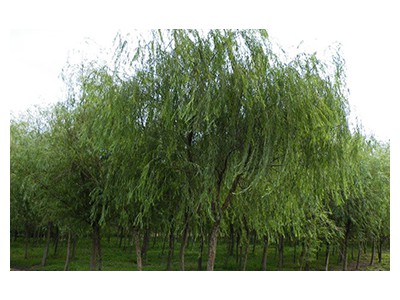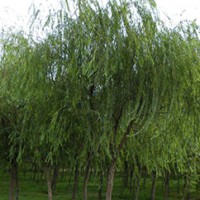The arbor is 12-18 meters high, and the canopy is spread out and evacuated. The bark is gray-black, irregularly cracked; the branches are thin, drooping, light brownish yellow, light brown or purple, glabrous. The buds are linear with sharp apex. Leaves narrowly lanceolate or linear-lanceolate, 9-16 cm long, 0.5-1.5 cm wide, apex is long and acuminate, base is wedge-shaped, both sides are glabrous or slightly hairy, top is green, bottom is lighter, with serrated edges; The petiole is long (3) 5-10 mm, with pubescent hairs; the stipules only grow on the germination branches, obliquely lanceolate or ovoid, with teeth on the edges. The inflorescence first leaves open, or opens at the same time as the leaves; the male inflorescence is 1.5-2 (3) cm long, has short stalks, and the shaft is hairy; the stamen 2, the filament and bracts are nearly as long or longer, and the base is somewhat hairy, Anthers are red-yellow; bracts are lanceolate and hairy on the outside; glands 2; female inflorescences are 2-3 (5) cm long, peduncle, 3-4 leaflets at the base, hairy shafts; ovary oval, absent Hair or lower part slightly hairy, sessile or nearly sessile, style short, stigma 2-4 deeply parted; bracts lanceolate, about 1.8-2 (2.5) mm long, hairy on the outside; gland 1. The capsule is 3-4 mm long, greenish yellowish brown. Flowering period from March to April, fruiting period from April to May.
Happy light, like warm and humid climate and humid deep acid and neutral soil. It is more cold-resistant, particularly resistant to water and humidity, but can also be born in areas with deep soil and high dryness. It has strong germination, well-developed root system, and rapid growth. The 15-year-old tree is 13m tall and has a serving diameter of 24cm. However, certain pests are more serious, have a short life span, and the tree trunks are easy to age. Gradually aging after 30 years. The root system is developed, has certain resistance to toxic gases, and can absorb sulfur dioxide.










